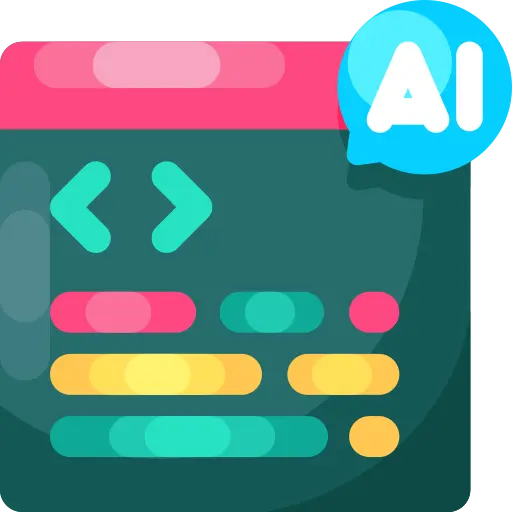What is Machine Learning?
Machine Learning
Machine learning (ML) is a field of study that focuses on the development of algorithms and models that enable computers to learn and make predictions or decisions without being explicitly programmed. ML algorithms learn from example data, known as training data, and use statistical techniques to generalize from these examples and improve their performance over time.

What is Machine learning?
Machine learning is a subfield of artificial intelligence (AI) that focuses on the development of algorithms and models that allow computer systems to learn and make predictions or decisions without being explicitly programmed. It is concerned with designing and implementing systems that can automatically analyze and interpret complex data, recognize patterns, and make intelligent decisions or predictions based on that data.
Process involved in Machine Learning
This process mainly involves these types :
- Data Collection: Gathering relevant data that represents the problem or task at hand. This data can come from various sources, such as sensors, databases, or online repositories.
- Data Preprocessing: Cleaning and preparing the data for analysis. This step involves handling missing values, removing noise, normalising data, and transforming it into a suitable format for the machine learning algorithms.
- Feature Extraction: Identifying and selecting the most relevant features or attributes from the data that are likely to have predictive power. This step helps reduce the dimensionality of the data and improve the efficiency of the algorithms.
- Model Selection and Training: Choosing an appropriate machine learning algorithm or model based on the problem at hand. The algorithm is trained on the labelled training data, where the inputs are paired with their corresponding desired outputs. The model learns to generalise from the examples and make predictions or decisions.
- Model Evaluation: Assessing the performance of the trained model using evaluation metrics and techniques. This step helps in determining how well the model is performing and whether any adjustments or improvements are needed.
- Model Deployment: Once the model is deemed satisfactory, it can be deployed in a real-world setting to make predictions or decisions based on new, unseen data. The model may need periodic retraining to adapt to changing patterns or incorporate new data.
To know more about Machine Learning course, Click on the link given below
Types of Machine Learning
It can be broadly classified into three main types:
- Supervised Learning
- Unsupervised Learning
- Reinforcement Learning
Supervised Learning:In this type, the algorithm is trained on labelled data, where the input data is paired with corresponding desired outputs. The goal is to learn a mapping function that can predict the output of new, unseen inputs.
Algorithm used in Supervised Learning
Unsupervised Learning: Here, the algorithm learns from unlabeled data without any explicit feedback. It seeks to find patterns, structures, or relationships within the data. Clustering and dimensionality reduction are common tasks in unsupervised learning.
Algorithm used in Unsupervised Learning
Reinforcement Learning: This type of learning involves an agent interacting with an environment and learning through trial and error. The agent receives feedback in the form of rewards or penalties based on its actions and adjusts its behaviour to maximise the rewards.
Algorithm used in Reinforcement Learning
What are the advantages and disadvantages of machine learning?
Advantages :
- Automation and Efficiency: ML enables the automation of tasks that would otherwise require significant human effort and time. ML algorithms can process large volumes of data quickly and make predictions or decisions faster, leading to improved efficiency and productivity.
- Pattern Recognition: ML algorithms excel at identifying patterns and relationships within complex datasets. They can discover insights and make predictions that may not be apparent to humans. This ability is valuable for tasks like image recognition, natural language processing, and anomaly detection.
- Adaptability and Learning: ML algorithms can adapt and improve their performance over time. They can learn from new data and update their models to incorporate new information, allowing them to handle changing environments and patterns effectively.
Disadvantages :
- Data Dependency: ML algorithms heavily rely on high-quality and representative data for training. If the training data is biassed, incomplete, or of poor quality, it can negatively impact the accuracy and performance of the models.
- Overfitting and Generalization: ML models may overfit the training data, meaning they become too specific to the training examples and fail to generalise well to new, unseen data. Striking the right balance between capturing patterns and avoiding overfitting can be challenging.
- Interpretability: Some complex ML models, such as deep neural networks, can be difficult to interpret and explain. This lack of interpretability can be a concern, especially in critical domains where transparency and accountability are essential.
FAQ's on Machine Learning
What is the difference between machine learning and artificial intelligence?
Artificial intelligence is a broad field that aims to create intelligent systems that can perform tasks that typically require human intelligence. ML is a subfield of AI that focuses on developing algorithms and models that enable computers to learn and make predictions or decisions without being explicitly programmed.
What are some popular machine learning frameworks or libraries?
There are several popular ML frameworks and libraries, such as Scikit-Learn, TensorFlow, Keras, PyTorch, and Apache Spark. These frameworks provide a wide range of tools and functionalities for efficiently developing and implementing ML models.
What is deep learning and how is it different from machine learning?
Deep learning is a subset of ML that focuses on training and using artificial neural networks with multiple layers, known as deep neural networks, to learn and make predictions. Deep neural networks are designed to mimic the structure and functionality of the human brain.
While both deep learning and ML are concerned with training models on data to make predictions or decisions, they differ in their approaches and capabilities.
Get over 200+ course One Subscription
Courses like AI/ML, Cloud Computing, Ethical Hacking, C, C++, Java, Python, DSA (All Languages), Competitive Coding (All Languages), TCS, Infosys, Wipro, Amazon, DBMS, SQL and others



Login/Signup to comment